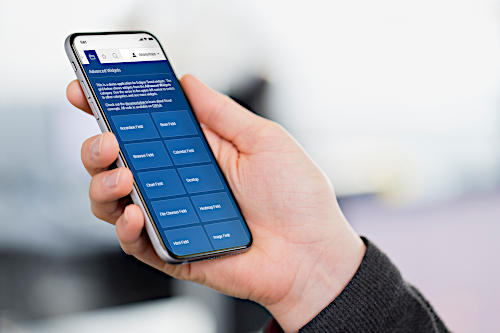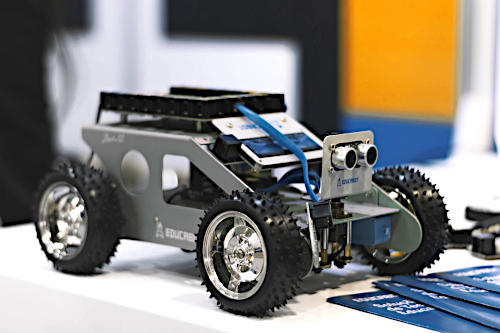Why you will love Eclipse Scout
Eclipse Scout is an open-source framework, developed by BSI Software and hosted by the Eclipse Foundation. Eclipse Scout makes building great business applications easy. Here are your benefits at a glance:

Features and Benefits

Eclipse Scout provides out-of-the-box solutions for your daily practice as a software engineer. Scout applications are built on an abstract 'model', a straight concept that frees you from dealing with tedious technical details and lets you focus on the business logic instead. Based on that model, Scout renders a modern, responsive UI which works on any device.
Eclipse Scout provides tools for all tiers, from database to UI. The following sections will show you the tools you get when programming in Scout. In case you miss something: Scout is also extensible. Simply add your favorite Java or JavaScript libraries.
Powerful Widget Library

You don't have to be a UI expert, if you want to create a beautiful user interface with Scout. You just create a model of your application and Scout renders that model, using its modern, robust widget library. Check our Demo apps to see Scout widgets in action. And if you are an expert: extend Scout with your favorite custom widget.
Widgets highlights:
- Powerful table
- Versatile tree
- Auto complete field
- Charts
Modern Web Toolstack

Eclipse Scout applications are web applications with or without a back-end server. Scout applications are built with modern, standard tools: The Java part is built with Maven, JavaScript is built with npm and Webpack.
At runtime, Scout relies on modern Java VMs and, for the front-end part, on HTML5, EcmaScript 6+ and CSS/LESS.
Scout Java applications are deployed to standard Java EE web application servers like Jetty, Tomcat, Glassfish, etc.
Responsive User Interface

Applications built with Eclipse Scout come with a responsive user interface that adapts to any device. You don't need specific UI know-how to build a responsive application that runs on desktop computers, tablets and mobile phones - Scout does that for you and your users.
In addition to providing a responsive user interface, Scout also makes sure the widgets are touch-capable. This means they are large enough to be tapped with a finger. Plus, they don’t depend on any pointing device feature, such as the right mouse button or a hover state. Still, they may use these features to improve the user experience on a regular desktop device.
Full Stack Solution for all Tiers

System and software architecture is the foundation for building stable and reliable business applications for hundreds or thousands of concurrent users. Eclipse Scout has done that for you already. The Scout architecture has been tried and tested in many successful enterprise business applications.
Classic Scout applications come with a back-end server, a UI server and a JavaScript client running in the browser. Eclipse Scout provides concepts, libraries and APIs for each tier.
Comprehensive Tools

- Dependency management
- Transaction handling
- Authorization and authentication
- Job management and scheduling
- Input validation and error handling
- Provider and client for REST and web-services
- Localization and internationalization (i18n)
- Client notifications (push)
- IDE support for Eclipse and IntelliJ
For Java and JavaScript

Eclipse Scout comes in two flavors.
With the Scout Classic flavor you develop primarily in Java. Based on your Scout model, the UI server creates a user interface which runs in the browser. You may extend the UI by adding custom widgets or tweak existing widgets by writing a bit of HTML5 and JavaScript code.
With the Scout JS flavor you develop primarily in JavaScript. You use the same model and concepts as a Java Scout programmer, but the frontend is written in JavaScript. That type of application may have no backend at all or a backend with a Scout server providing REST methods or a completely different backend written in PHP, .NET, node.js, etc.